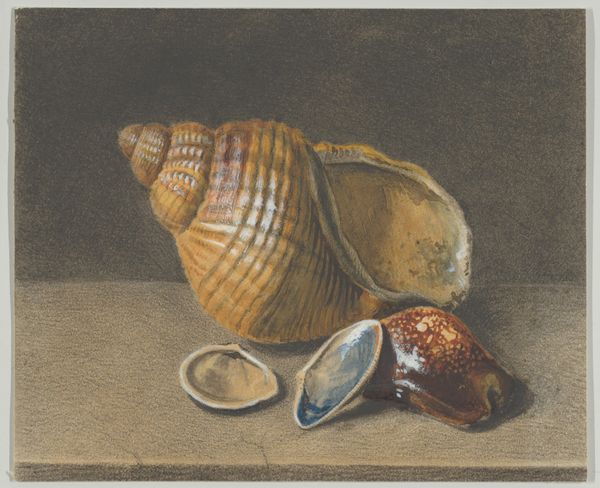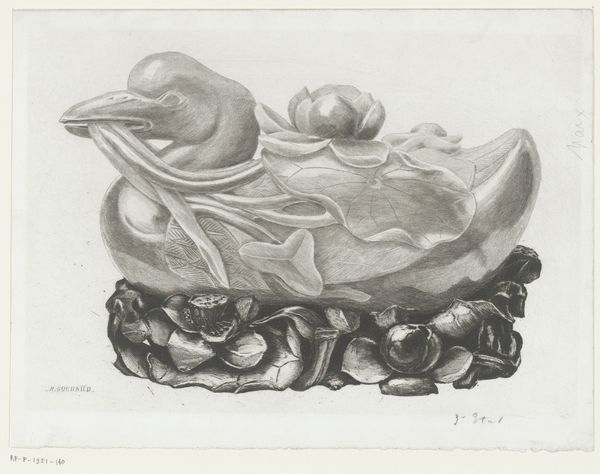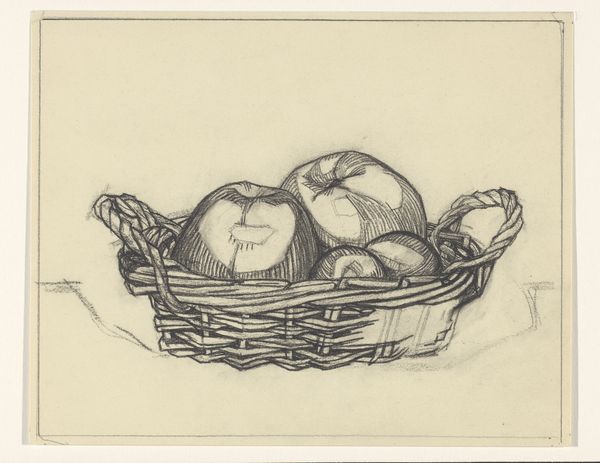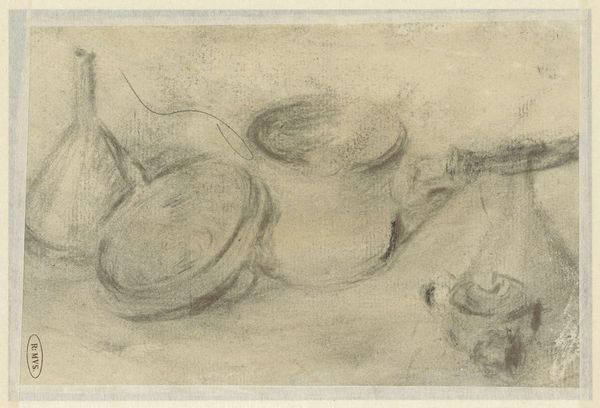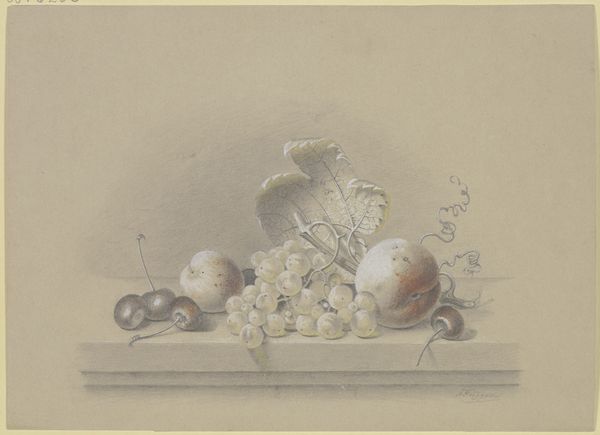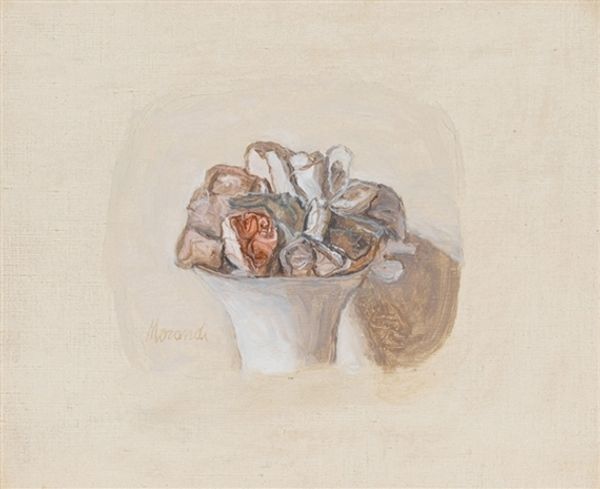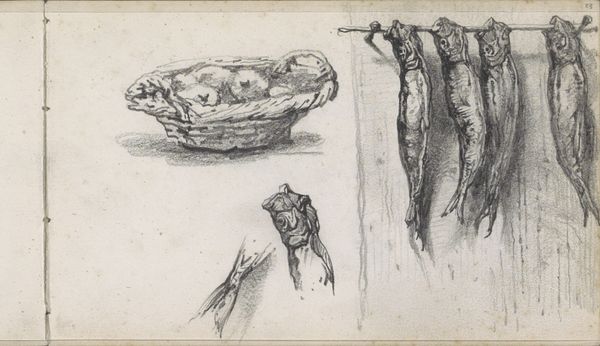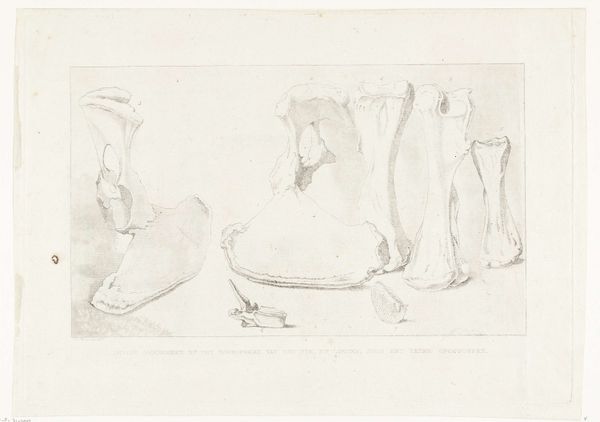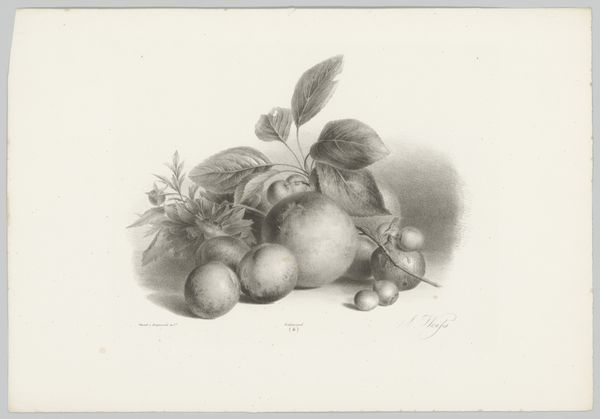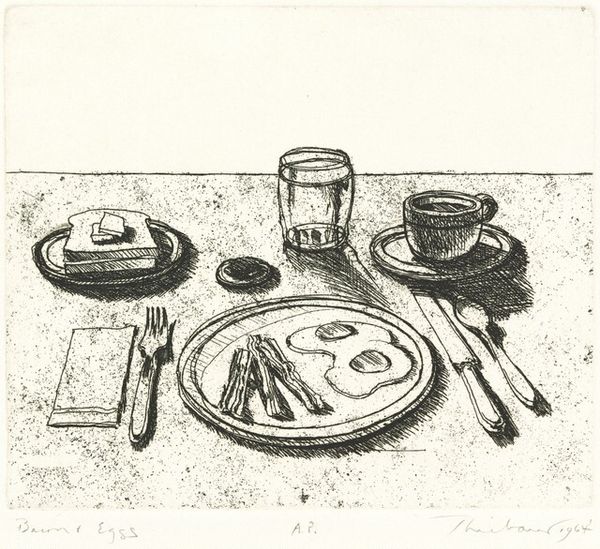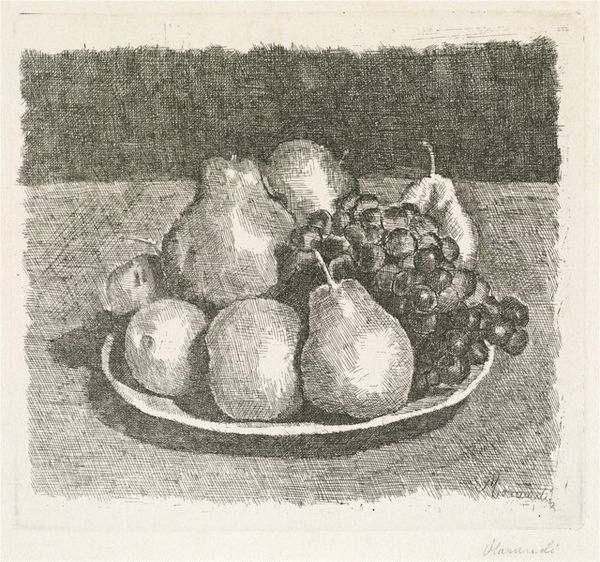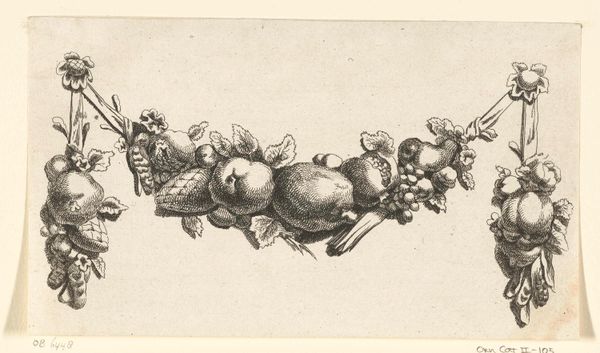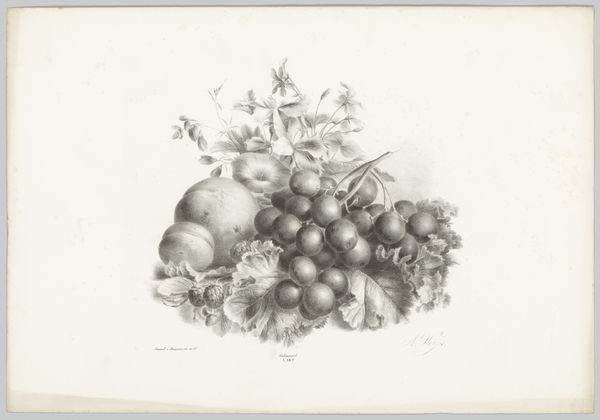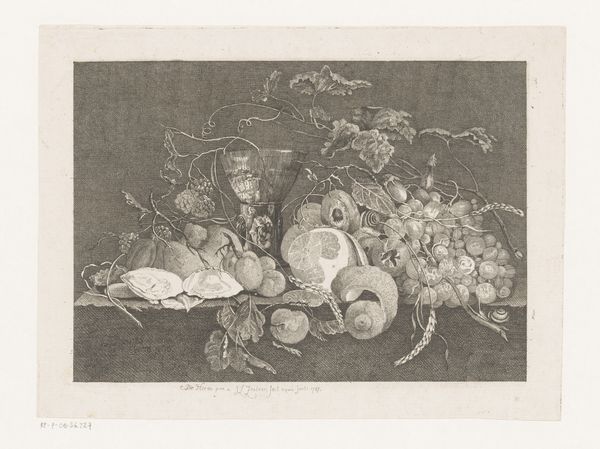
drawing, pencil
#
drawing
#
pencil drawing
#
intimism
#
pencil
#
realism
Dimensions: height 250 mm, width 339 mm
Copyright: Rijks Museum: Open Domain
Curator: Here we have "Still Life with Bread, Cheese, Fish, Fruit, and a Glass of Wine" made sometime between 1775 and 1833 by Jean Bernard. It's a detailed drawing done with pencil. Editor: It feels like a humble meal, very simply rendered. What do you see in this piece that interests you? Curator: The explicit depiction of commodities and their consumption speaks volumes. Bernard meticulously renders each item, from the coarse texture of the bread to the glassy surface of the wine. Let's consider how the tools employed to create this drawing - pencil and paper – contribute to our understanding of production during this time. Were these materials readily accessible, or did their procurement involve labor and trade? Editor: That's a good point. The accessibility of art materials probably affected who could even become an artist in the first place. It's not just about talent. Curator: Exactly! The material reality shapes the artistic practice. Now, look at the arrangement itself. Are these luxury goods? Everyday staples? How does Bernard's choice to elevate them through art speak to contemporary ideas about labor, value, and the very concept of “still life” itself? Editor: It almost democratizes art a little, by making something mundane like a meal worthy of artistic consideration. Curator: Precisely. Instead of depicting royal ceremonies, Bernard highlights the daily sustenance produced by a network of workers. Editor: This changes my view. Now, it seems that the artist isn’t just drawing a still life, but offering commentary on society by depicting simple things. Curator: The true artistry, then, resides not merely in technical skill but in Bernard’s ability to weave social and economic implications into a seemingly straightforward drawing. The history of materials, tools, and access become a part of our observation. Editor: Fascinating. I'll never look at a still life the same way again!
Comments
No comments
Be the first to comment and join the conversation on the ultimate creative platform.
